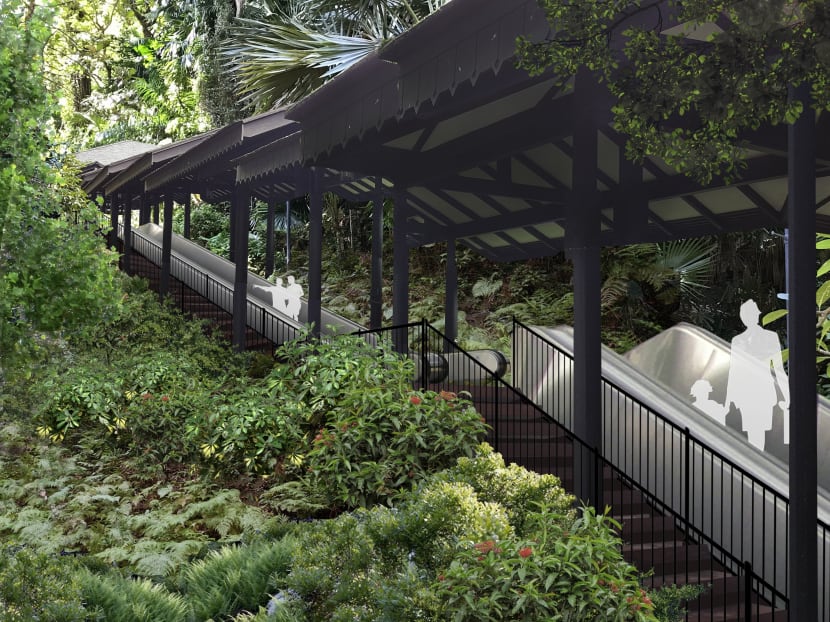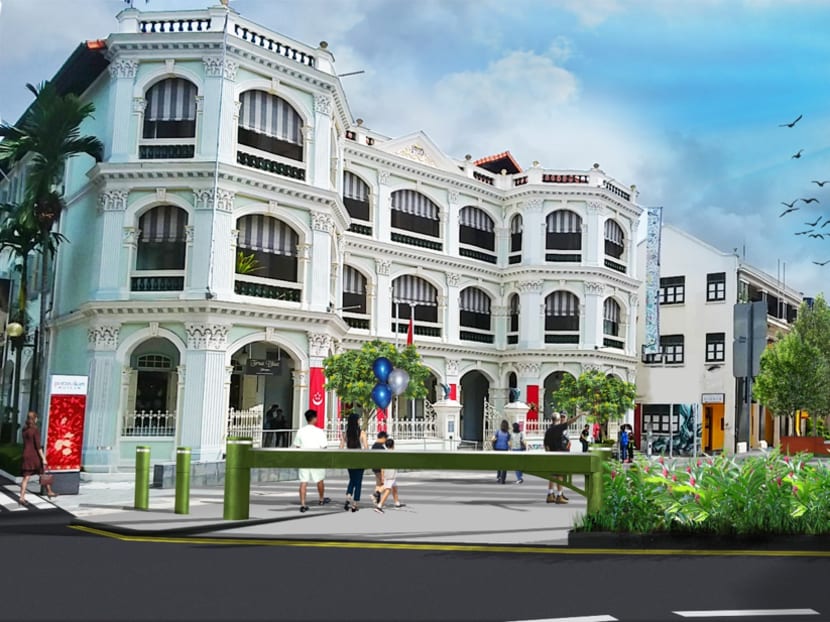S’pore’s bicentennial showcase to be held at Fort Canning Park, area to be enhanced
SINGAPORE — A showcase exhibition to mark the Republic’s bicentennial in 2019 will be held at Fort Canning Park, Minister for National Development Lawrence Wong announced on Saturday (Feb 3), as he unveiled plans to improve the area.
SINGAPORE — A showcase exhibition to mark the Republic’s bicentennial in 2019 will be held at Fort Canning Park, Minister for National Development Lawrence Wong announced on Saturday (Feb 3), as he unveiled plans to improve the area.
“Fort Canning is really an integral part of our history — of the long history of Singapore, way before independence. We want to ensure that its stories continue to be remembered. That’s why we have plans to enhance Fort Canning,” he said, adding that the enhancement works will commence in March this year and cover some eight hectares of the 18-hectare hill.
The bicentennial commemoration - marking the 200th year since Sir Stamford Raffles landed in Singapore – will see numerous activities throughout the year, culminating in the showcase exhibition at the Fort Canning Centre.
Constructed in 1926 as a British army barracks, it is currently being used as an event space and houses some restaurants.
“The Singapore Bicentennial will look at our 200-year history from 1819, when Sir Stamford Raffles landed in Singapore, as well as 500 years prior, to 1299,” said the National Parks (NParks) in a statement.
“Fort Canning Centre will be re-purposed as a gallery to tell the rich history of the hill and the beginnings of Singapore through the 14th, 19th and 20th centuries.”
Other improvement plans include the restoration of three historical gardens, recuration of heritage trails and enhanced accessibility for the public, it added.

An artist's impression of an sheltered escalator to Fort Canning Park. Photo: NParks.
Covered escalators will be built to allow visitors to reach the peak of Fort Canning Hill from Fort Canning MRT station, and from Stamford Green on the other side of the hill.
The NParks will also looking at linking the National Museum and the redeveloped Park Mall to the park, Mr Wong said on Saturday.
He said the need to make the park more accessible was important, “because anytime you ask somebody what is your impression of Fort Canning, they will tell you that it is very hard to get to…that it is very difficult to access”.
A part of Armenian Street, which runs adjacent to the hill, will be pedestrianised and turned into a park featuring spices, and other economic crops for food and horticulture.
The stretch will also house The First Botanic Garden, a recreation of an experimental garden Sir Stamford Raffles had established in 1822.
“The new park at Armenian Street is part of a multi-agency effort …in collaboration with stakeholders within the vicinity to create new vibrant public spaces that visitors can enjoy,” said NParks.
The three historical gardens will each have its own character.
For example, the Royal Garden facing Stamford Road will showcase fruit trees like rambutans, and jackfruits, as well as different species of gardenias, jasmines, and magnolias.
The Jubilee Park, which will be at the foot of Fort Canning Hill near Fort Canning MRT station, will see family-friendly spaces, like play areas, an event space, and a landscaped theatre for art and cultural events, set in a garden environment.
NParks is also looking to re-curate a series of heritage trails within the park “to interpret the rich history of Fort Canning Park”.
For example, one trail will feature the former bathing site of the royals, known as the Forbidden Spring. The NParks said that a water feature with stone murals depicting the significance of water in the history of Fort Canning and the surrounding area, will be built.
Another trail will showcase native flora and fauna collected and documented by Sir Stamford Raffles and William Farquhar. Mr Wong said on Saturday that new technology, including augmented reality, will be used to “create a more immersive experience”.
Fort Canning Park is Singapore’s second largest park in the city, after the Singapore Botanic Gardens, and dates back to the 14th century.
Mr Wong said that along with the improvement works, there is a need for “better and more proactive programming” all year round.
He noted that it has hosted many popular events such as Shakespeare in the Park, and Ballet under the Stars but these tend to be ad-hoc.
On its part, NParks said that it will work with partners in the area to organise year-round activities.
“We hope that all of these ideas and plans will enliven the park and bring greater vibrancy to the area,” it said.
“We also seek your views, on how we can fine tune our plans, and make it even better, and your ideas and feedback on what new programmes you would like to see.”
Members of the public can give suggestions on new programmes and features the park could have from Saturday to Feb 11, at an exhibition detailing the enhancement plans. They can also do so online at www.nparks.gov.sg/fortcanning.







